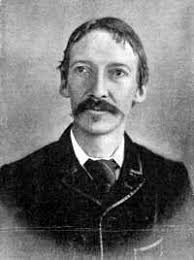 Last week I was in Scotland, my main purpose being to attend the first screening of the documentary film for which I'm script writer, "Finding David Douglas." Douglas was a Scottish botanist who explored the flora and fauna of the Pacific Northwest in the 1820s before meeting an ignominious fate on the Big Island in 1834.
Last week I was in Scotland, my main purpose being to attend the first screening of the documentary film for which I'm script writer, "Finding David Douglas." Douglas was a Scottish botanist who explored the flora and fauna of the Pacific Northwest in the 1820s before meeting an ignominious fate on the Big Island in 1834.In February I went with my film cohorts to Hawai'i to see the site of Douglas's demise (a cattle pit on Mauna Kea) and I wrote about it then.
The Forestry Commission of Scotland, being one of the sponsors of the film, asked for the first screening, though we have lots to do before the film is ready for its official premiere in April. Six of us, including David Milholland, the head of the Oregon Cultural Heritage Commission, went from Portland to the town of Pitlochry, where more than 200 people attended the film and gave it pretty high marks.
My other purpose was to write a travel article for Alaska Airlines Magazine called "A Tale of Two Cities," about my impressions of Edinburgh and Glasgow. I confess that I was particularly eager
 to visit Edinburgh because of its connection with Hawai'i, in that it is the birthplace of the writer Robert Louis Stevenson. Stevenson, who was always frail and prone to illness, spent the last years of his life seeking better health by sailing with his family around the Pacific.
to visit Edinburgh because of its connection with Hawai'i, in that it is the birthplace of the writer Robert Louis Stevenson. Stevenson, who was always frail and prone to illness, spent the last years of his life seeking better health by sailing with his family around the Pacific.In January 1889 Stevenson anchored at Honolulu. He went to 'Iolani Palace to introduce himself to King Kalâkaua and the two hit it off immediately. In Edinburgh I visited a lovely little museum devoted to the three most famous Scottish writers: Robert
 Burns, Sir Walter Scott and Robert Louis Stevenson. Most of the Stevenson exhibit was comprised of photographs and artifacts from his years in the Pacific. There were numerous photos of him and Kalâkaua, as well as group photos that included both Stevenson's and Kalâkaua's families.
Burns, Sir Walter Scott and Robert Louis Stevenson. Most of the Stevenson exhibit was comprised of photographs and artifacts from his years in the Pacific. There were numerous photos of him and Kalâkaua, as well as group photos that included both Stevenson's and Kalâkaua's families.Kalâkaua was eager to have the eminent Scottish writer meet his brother-in-law, a fellow Scot who also hailed from Edinburgh. Archibald Scott Cleghorn had married Likelike, the sister of Kalâkaua and Lili'uokalani. His wife had died in 1887 at age 36 and he was raising their daughter, Ka'iulani, who was expected to reign as queen of Hawai'i someday. At the time she met Stevenson, she was just 13. But in a few months she was to depart for England. Her father felt that she should have a European education in order to be an effective monarch in modern times. She was reluctant to leave her island home, so Stevenson tried to encourage her by telling her exciting tales of Scotland while the two sat under the banyan tree at her father's garden estate, 'Ainahau.
Stevenson wrote a poem for her, which begins: "Forth from her land to mine she goes, The Island maid, the Island rose; Light of heart and bright of face: The daughter of a double race."
 Ka'iulani would never see her writer friend again. He and his family eventually settled in Samoa, where Stevenson was known as "Tusitala," teller of tales. In 1894, at age 44, Stevenson died suddenly (while opening a bottle of wine) of a brain hemorrhage. Ka'iulani died five years later, at age 23. She had returned to Honolulu after her aunt had been deposed and the monarchy abolished. It was said she died of a broken heart, though typhus was the more likely culprit.
Ka'iulani would never see her writer friend again. He and his family eventually settled in Samoa, where Stevenson was known as "Tusitala," teller of tales. In 1894, at age 44, Stevenson died suddenly (while opening a bottle of wine) of a brain hemorrhage. Ka'iulani died five years later, at age 23. She had returned to Honolulu after her aunt had been deposed and the monarchy abolished. It was said she died of a broken heart, though typhus was the more likely culprit.Her father's estate, 'Ainahau, no longer exists, but its site in Waikiki is marked by two streets with familiar names: Cleghorn and Tusitala. Ka'iulani's memory is honored in the popular name of the Chinese jasmine flower, her favorite. Because she loved peacocks and kept many of them at 'Ainahau, the flower associated with her is known as pikake, the Hawaiian word for peacock.
A lasting memorial to Cleghorn, the father of the princess, is Kapiolani Park, which he planned and landscaped. It is fitting that Kapiolani Park is the site of the annual Scottish Festival and Highland Games, on the first weekend in April.
Since the late 1700s, many Scots came to Hawai'i and made lasting contributions. But I'm partial to one adventurous and imaginative Scot, the man known as Tusitala.

1 comment:
Actually, there is no evidence Princess Ka'iulani died of typhus. There IS strong evidence she was a victim of thyroid disease, complicated by overwhelming stress. Her last cardiopulmonary illness was brought on or at least exacerbated by a chill caught swimming on the Big Island, compounded by a horseback ride in the rain.
Post a Comment